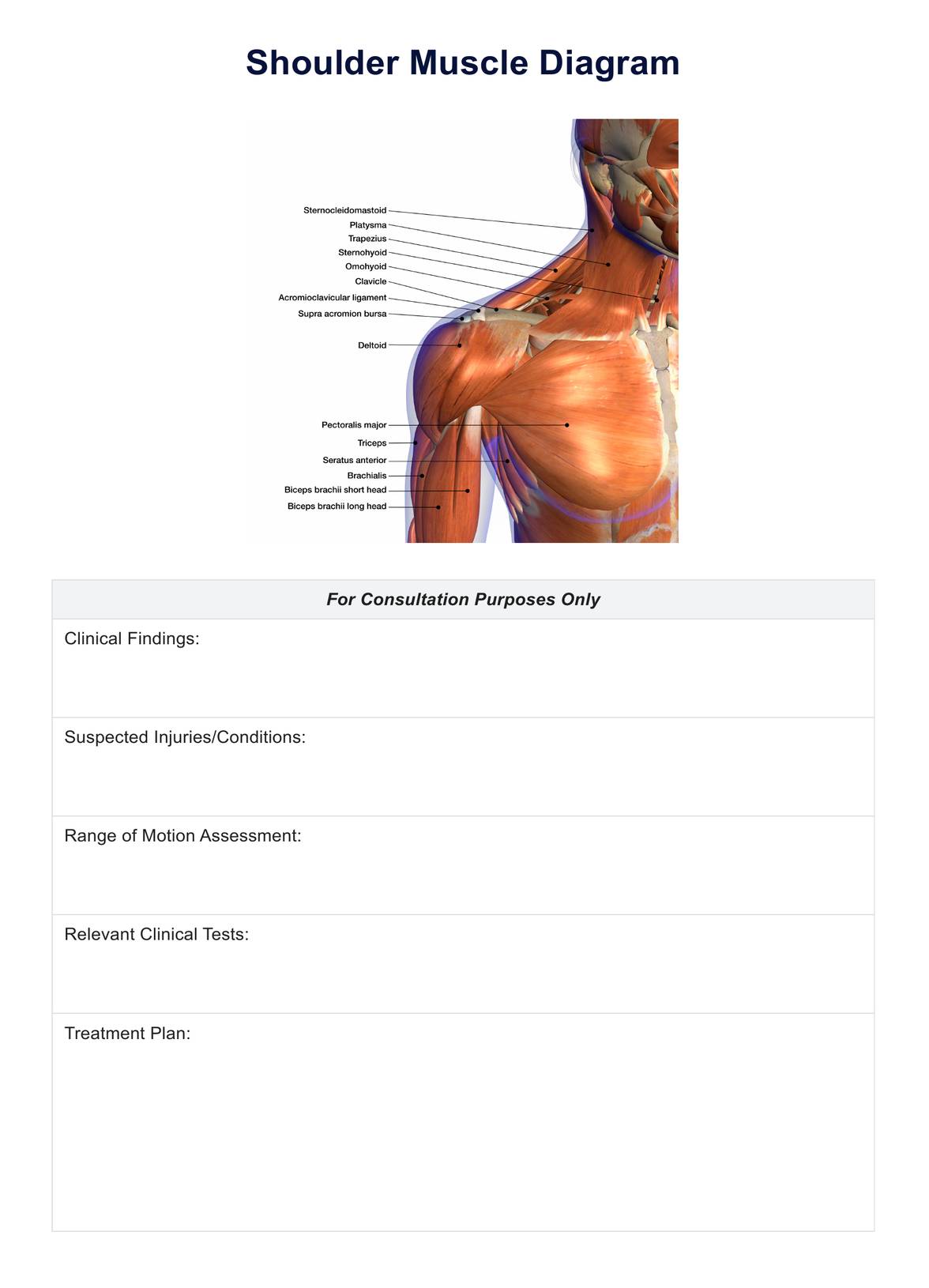The diagrams aid in studying anatomy by providing a visual reference to understand the arrangement and functions of different shoulder muscles.

Shoulder Muscle Diagram
Looking for an intuitive tool for explaining shoulder conditions? Download the shoulder muscle diagram now for effective consultations!
Use Template
Shoulder Muscle Diagram Template
Commonly asked questions
In a clinical setting, these diagrams communicate and explain shoulder conditions, injuries, and treatment plans to patients, enhancing patient understanding.
Yes, there are different shoulder muscle diagrams, ranging from basic illustrations to more detailed diagrams, including labels for specific muscles, bones, and their connections.
EHR and practice management software
Get started for free
*No credit card required
Free
$0/usd
Unlimited clients
Telehealth
1GB of storage
Client portal text
Automated billing and online payments











